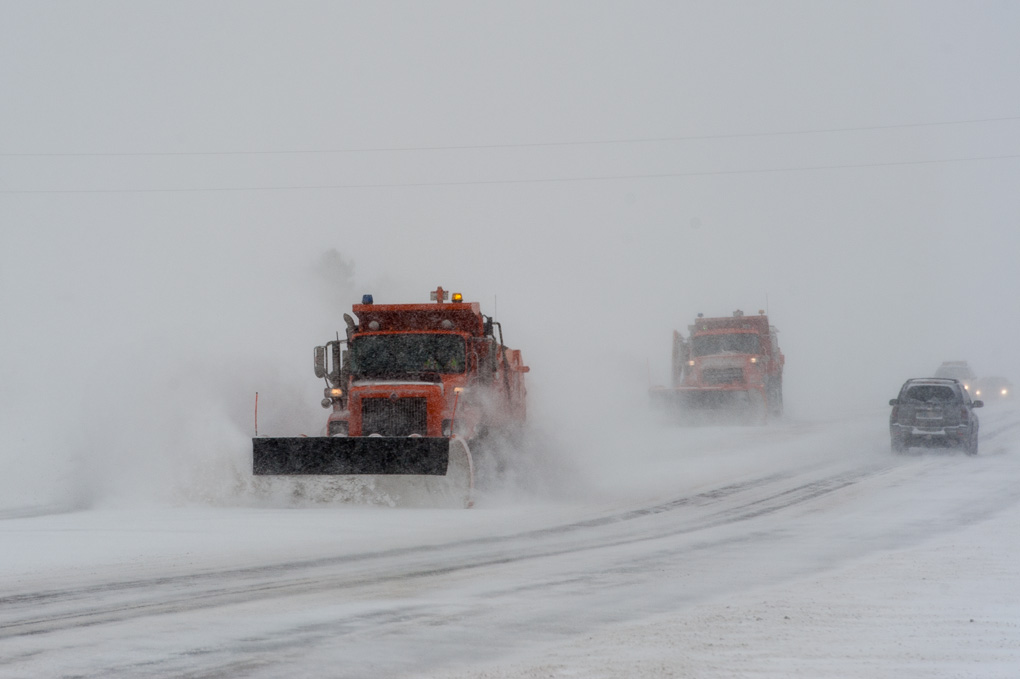
NWS Winter Weather Definitions
Photo by SoloTravelGoals on Unsplash
The National Weather Service (NWS) issues a variety of weather products to the public to help communicate the severity of weather events and guide appropriate actions to keep people safe. Winter weather related advisories, watches, and warnings are designed to inform people of potential weather impacts and take necessary precautions, prepare to stay informed, and in some cases, take urgent action before and during winter weather events. Let’s break them down:
NWS Advisories, Watches, and Warnings
- Frost Advisory
- Definition: Issued when widespread frost (usually below 36°F) is expected.
- Impact: Frost can damage sensitive plants.
- Caution: Cover or bring in sensitive plants and take precautions for outdoor plumbing.
- Freeze Warning
- Definition: Issued when sub-freezing temperatures (usually below 32°F) are expected or occurring.
- Impact: Potential damage to sensitive vegetation, crops, and outdoor plumbing.
- Caution: Take precautions to protect plants and outdoor pipes.
- Hard Freeze Warning:
- Definition: Issued when temperatures are expected to drop significantly below freezing (usually below 28°F).
- Impact: Severe damage to sensitive vegetation, crops, and outdoor plumbing.
- Caution: Take immediate action to protect plants and pipes.
- Wind Chill Advisory:
- Definition: Issued when seasonably cold wind chill values (but not extremely cold) are expected or occurring.
- Impact: Dress appropriately, cover exposed skin, and take precautions when venturing outdoors.
- Purpose: Raises awareness of cold conditions without immediate life-threatening danger.
- Wind Chill Watch:
- Definition: Issued when dangerously cold wind chill values are possible.
- Impact: Adjust plans to avoid being outside during the coldest parts of the day. Update your winter survival kit and ensure your car has sufficient gas.
- Purpose: Allows people to prepare for potential extreme cold conditions.
- Wind Chill Warning:
- Definition: Issued when dangerously cold wind chill values are expected or occurring.
- Impact: Avoid going outside during the coldest parts of the day. Dress in layers, cover exposed skin, and ensure someone knows your whereabouts.
- Purpose: Urges immediate action to protect life and prevent frostbite.
- Winter Weather Advisory:
- Issued when winter weather conditions are expected to cause significant inconveniences but not life-threatening situations.
- Examples include snow, freezing rain, sleet, or a combination of these.
- Cautionary measures are recommended to minimize travel disruptions and potential hazards.
- Winter Storm Watch:
- Issued when there is a potential for significant winter storm conditions (heavy snow, ice, or a combination) within the next 12 to 48 hours.
- Allows people to prepare and stay informed about the evolving situation.
- Winter Storm Warning:
- Issued when significant winter weather conditions are imminent or occurring.
- Includes heavy snow, sleet, freezing rain, or a combination.
- Urges immediate action to protect life and property.
- Freezing Rain Advisory:
- Definition: Issued when light freezing rain or freezing drizzle is expected, leading to hazardous travel conditions.
- Impact: Ice accumulation is typically less than 1/4 inch.
- Caution: Be cautious while driving and walking on icy surfaces.
- Winter Weather Advisory (for Ice):
- Definition: Issued when winter weather conditions (including ice) are expected to cause significant inconveniences but not life-threatening situations.
- Impact: Cautionary measures are recommended to minimize travel disruptions and potential hazards.
- Ice Storm Warning:
- Definition: Issued when significant ice accumulation (usually 1/4 inch or more) is expected.
- Impact: Ice-covered surfaces pose severe hazards to travel, power lines, and trees.
- Caution: Take precautions to avoid travel and stay indoors during the storm.
- Lake Effect Snow Advisory:
- Definition: Issued when lake effect snowfall accumulation (and blowing snow) remains below warning criteria.
- Impact: Cautionary measures are recommended due to localized snowfall and potential travel disruptions.
- Lake Effect Snow Warning:
- Definition: Issued when widespread or localized lake effect snowfall accumulation (and blowing snow) remains below warning criteria.
- Impact: Expects lake effect snow showers, and travel may be difficult in some areas.
- Blizzard Advisory:
- Definition: Not commonly used by the NWS. However, it would indicate less severe blizzard conditions than a warning.
- Caution: Still significant hazards for travel and safety.
- Blizzard Watch:
- Definition: Issued when there is a potential for blizzard conditions (sustained winds or frequent gusts of 35 mph or more and considerable falling/blowing snow) within the next 12 to 48 hours.
- Purpose: Allows people to prepare and stay informed about the evolving blizzard threat.
- Blizzard Warning:
- Definition: Issued when sustained or frequent winds of 35 mph or more combine with considerable falling and/or blowing snow.
- Impact: Reduced visibility to less than a quarter mile for at least three hours.
- Danger: Extremely hazardous conditions for travel and outdoor activities.
- Snow Squall Warning:
- Definition: Issued for short-fused, intense bursts of heavy snowfall accompanied by strong winds.
- Impact: Rapidly reduced visibility and hazardous travel conditions.
- Purpose: Provides critical, highly localized life-saving information. Avoid or delay motor travel until the squall passes.
If you liked this article, check out Skyview Weather’s growing library of educational weather and climate content. Skyview Weather also offers comprehensive in-person and virtual weather education and weather safety training classes to ensure you and your staff are informed and prepared for severe, winter, and fire weather.
